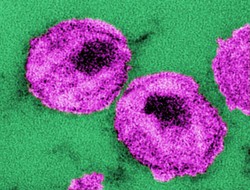Antiretroviral drugs have become a major public health breakthrough in the management of human immunodeficiency virus (HIV) infection. They serve to control the severity of disease as well as prevent others from acquisition of the infection. Specifically, the use of these drugs in serodiscordant couples may protect the HIV-negative sexual partner from this medical condition [1].

The Shortage of Antiretroviral Drugs
Despite progress in the treatment of human immunodeficiency virus, many people on the globe do not have access to these medications.
Extent of the Drug Shortage
The World Health Organization, United Nations General Assembly, UNAIDS, and the Joint United Nations Programme on HIV/AIDS, have a goal that 15 million people worldwide take antiretroviral agents by 2015. At the end of 2010, there were 6.6 million people on the globe who took those drugs, but they comprised less than half of those who needed the medication [1].
Today there are 2.1 million children worldwide who require antiretroviral therapy; however, less than a fourth of them receive the treatment. Of those pediatric clients with HIV infection who do not receive medication, the mortality rate at two years of age is 50 percent. Four-fifths of these children will not survive to age five [1].
Consequences of the Shortage
Pediatric patients with HIV are the most vulnerable to the disease because their immune systems have not yet fully developed. This is why antiretroviral therapy must be available for seropositive pregnant women as these agents dramatically reduce the occurrence of mother-to-child transmission of the infection [1]. In fact, perinatal cases of HIV are uncommon in the United States where pregnant women have access to the medication.
The perinatal period includes the final weeks of pregnancy and the first month of the baby’s life.
Treatment as prevention may involve the use of these drugs in HIV-positive individuals in order to prevent the disease in the seronegative partner. It also prevents the occurrence of tuberculosis in HIV seropositive patients [1]. In other words, HIV places a person at risk for tuberculosis because of damage to the immune system which results from HIV. Indeed, there has been a worldwide resurgence of tuberculosis since the HIV epidemic began more than 30 years ago [1].
Conclusion
Much progress has occurred in the management and control of HIV over the last three decades. Adequate supply of medication to developing countries will further bring the globe to control of this major public health crisis.
References
- World Health Organization. (2012). Programmatic Update. Antiretroviral treatment as prevention (TasP) of HIV and TB. Retrieved June 8, 2013.
- The photograph is a thin-section transmission electron micrograph of several human immunodeficiency virus particles. Reprinted with permission from Centers for Disease Control/Dr. A. Harrison/Dr. P. Feorino.
Disclaimer
The information contained in this article is for educational purposes only and should not be used for diagnosis or to guide treatment without the opinion of a health professional. Any reader who is concerned about his or her health should contact their physician for advice.
You might also like
How to React to and Help a Loved One with CancerDealing with cancer? Learn how to react, treat and care for a loved one when ...
Do You Have Your Own Cure For Cancer?Is it possible you might be completely unaware of the cancer cure, a natural ...



 The Reality of Aspirinon 05/24/2021
The Reality of Aspirinon 05/24/2021
 An Old Microbeon 03/31/2021
An Old Microbeon 03/31/2021
 Coronavirus and Mental Illnesson 02/14/2021
Coronavirus and Mental Illnesson 02/14/2021
 Acute Ischemic Strokeon 12/25/2020
Acute Ischemic Strokeon 12/25/2020


Comments